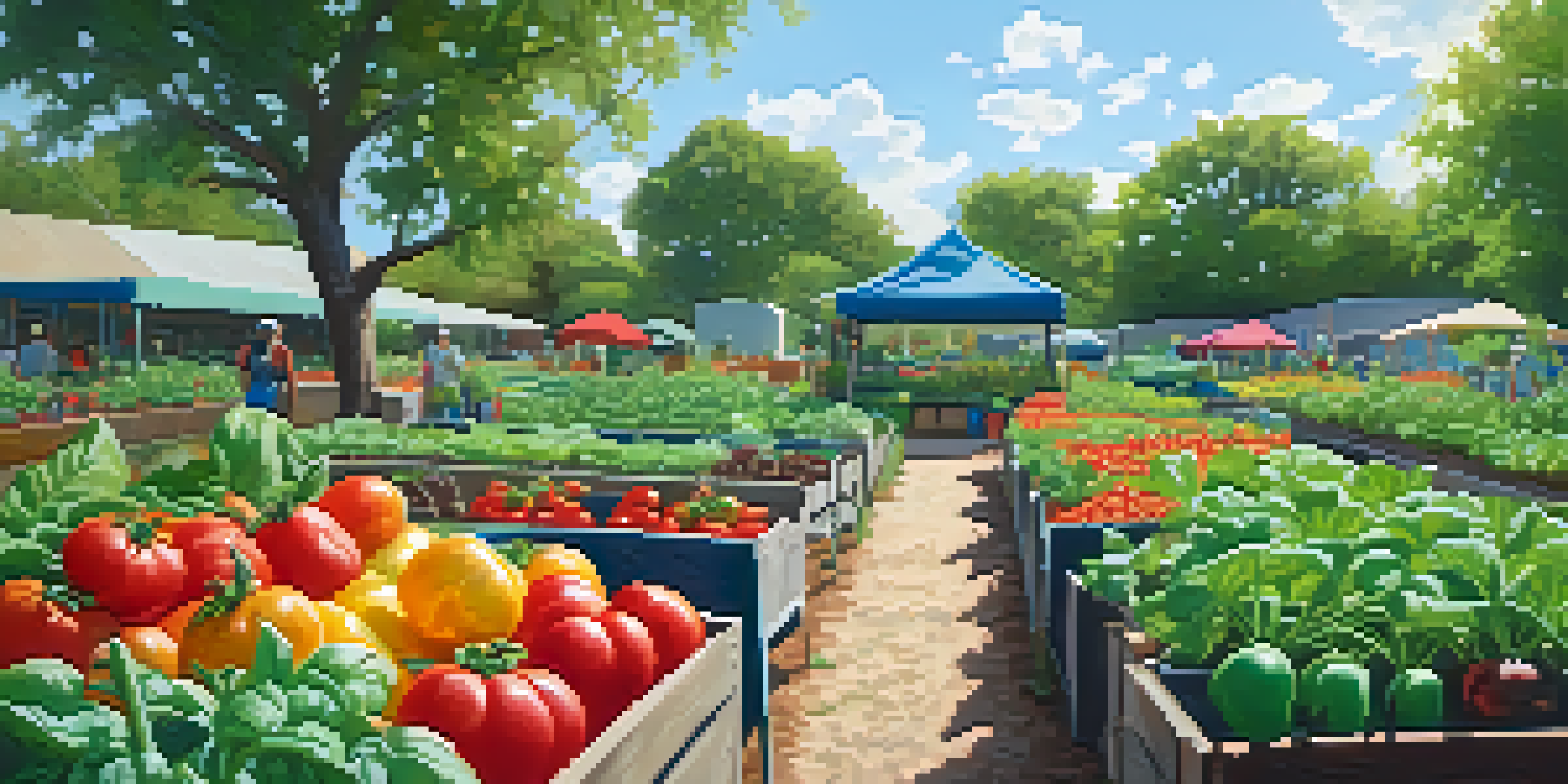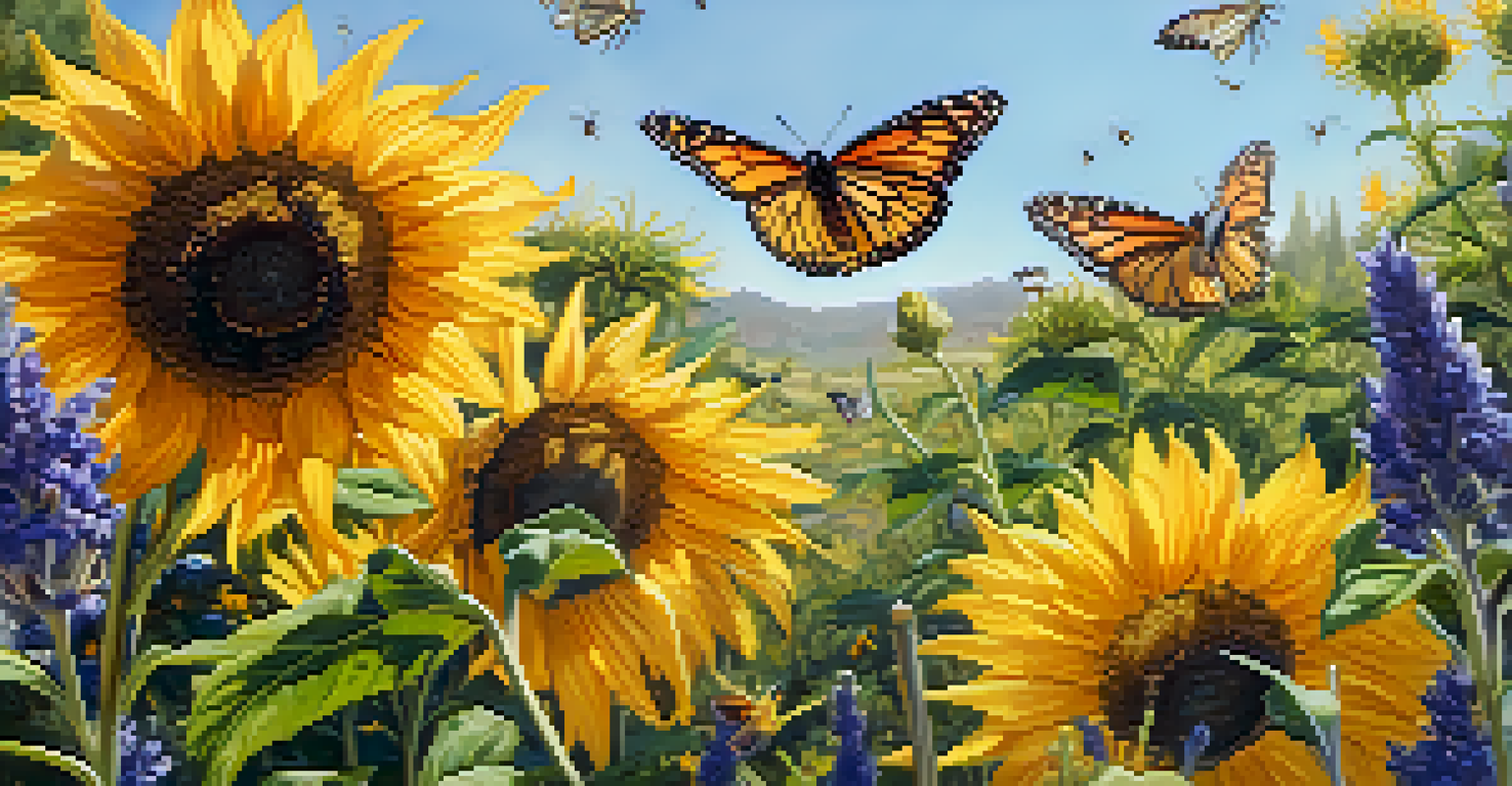Seasonal Crops to Grow in Austin Community Gardens

Understanding Austin's Growing Seasons
Austin's climate is a gardener's dream, with its mild winters and hot summers. This unique weather pattern gives you the flexibility to grow a variety of crops almost year-round. Understanding when to plant is crucial for ensuring a bountiful harvest. In general, the best planting times in Austin can be split into spring and fall seasons, each offering its own selection of suitable crops.
To plant a garden is to believe in tomorrow.
In spring, the soil warms, making it perfect for planting a range of vegetables and herbs. Come fall, the cooler temperatures invite a different set of crops that thrive in mild weather. Knowing these seasonal transitions can help you plan your garden effectively, allowing you to maximize your space and yield.
Ultimately, by familiarizing yourself with Austin's growing seasons, you can enjoy fresh produce throughout the year. This understanding lays the groundwork for choosing the right crops that will flourish in your community garden.
Spring Favorites: Vegetables and Herbs
Spring is the perfect time to sow seeds for a variety of vegetables and herbs that thrive in warmer temperatures. Popular choices include tomatoes, peppers, and basil, all of which love the sun and can yield a productive harvest. These plants not only add vibrant colors to your garden but also provide fresh ingredients for delicious meals.

In addition to staples like tomatoes and peppers, consider planting cucumbers and zucchini, which grow vigorously during the spring months. These crops are easy to care for and can produce abundantly, making them ideal for community gardens where you want to share your harvest with others. Plus, they're versatile in the kitchen, allowing for countless culinary creations.
Austin's Gardening Seasons Explained
Understanding the distinct spring and fall growing seasons in Austin can help gardeners maximize their harvest.
Don't forget about herbs like cilantro and dill, which can enhance your dishes and attract pollinators to your garden. By choosing a mix of vegetables and herbs, you can create a thriving spring garden that benefits both your palate and the ecosystem.
Fall Harvest: Crops to Consider
As summer fades, fall arrives with cooler temperatures, making it an excellent time for planting crops that thrive in milder conditions. Leafy greens such as kale, spinach, and Swiss chard are perfect for this season. They not only grow quickly but also provide a nutritious addition to your meals.
Gardening adds years to your life and life to your years.
Root vegetables like carrots, radishes, and beets are also excellent fall choices. These crops can be sown later in the season and will sweeten as the temperatures drop, making them a delightful addition to your harvest. Their deep roots help improve soil structure, benefiting future crops.
By embracing fall planting, you can extend your gardening season and enjoy fresh produce well into the cooler months. This is a wonderful opportunity to connect with your community and share the joys of gardening and healthy eating.
Perennials: Long-Term Garden Investments
While seasonal crops are fun to grow, don't overlook the benefits of perennials in your community garden. Plants like asparagus, rhubarb, and certain herbs can provide a reliable harvest year after year. This not only saves time and effort but also enriches the garden's biodiversity.
Perennials typically require more initial care and patience, as they take a season or two to establish. However, once they are thriving, they can be a low-maintenance addition to your garden. They can also provide habitat for pollinators and other beneficial creatures, creating a more vibrant ecosystem.
Community Gardens Foster Connection
Engaging in community gardening not only promotes sharing fresh produce but also strengthens bonds among neighbors.
Incorporating perennials alongside your seasonal crops allows for a dynamic garden that evolves over time. It’s about creating a sustainable environment that supports both your gardening goals and the local ecosystem.
Companion Planting: Boosting Crop Yields
Companion planting is a gardening strategy that involves growing different plants together for mutual benefits. This technique can enhance growth, deter pests, and improve overall yields. For example, pairing tomatoes with basil not only helps both plants thrive but can also enhance the flavor of the tomatoes.
Another great combination is planting carrots alongside onions. The strong scent of onions can deter pests that typically target carrots. This symbiotic approach to gardening not only maximizes your space but also creates a more resilient garden ecosystem.
By integrating companion planting into your garden plan, you can enjoy a richer harvest while minimizing the need for chemical pest control. It’s a win-win for both your garden and the environment.
Attracting Pollinators for a Healthier Garden
Pollinators like bees, butterflies, and hummingbirds play a vital role in the health of your garden. They help with the pollination of many crops, which is essential for fruit and seed production. By planting flowers such as sunflowers, zinnias, and lavender, you can attract these beneficial creatures to your community garden.
Creating a pollinator-friendly space not only supports your crops but also contributes to the overall health of the ecosystem. Pollinators are often in decline due to habitat loss, so every garden can make a difference by providing them with food and shelter.
Companion Planting Enhances Yields
Utilizing companion planting strategies can improve crop yields and create a healthier garden ecosystem.
Encouraging pollinators in your garden can lead to a more fruitful harvest and a vibrant community space. It's a simple way to give back to nature while enhancing your gardening experience.
Community Involvement: Sharing the Harvest
Gardening in community spaces is about more than just growing food; it's also about building connections with your neighbors. Sharing the harvest can foster a sense of community and encourage others to get involved in gardening. Consider organizing potlucks or events where everyone can bring dishes made with the produce grown in the garden.
Collaborative gardening efforts can also lead to shared knowledge and experiences, making it a wonderful learning opportunity for all ages. You might find that working together not only improves your gardening skills but also strengthens community bonds.

By engaging with your local community through gardening, you create a supportive environment where everyone can enjoy the fruits of their labor. This spirit of collaboration can turn a simple garden into a thriving hub of activity and connection.